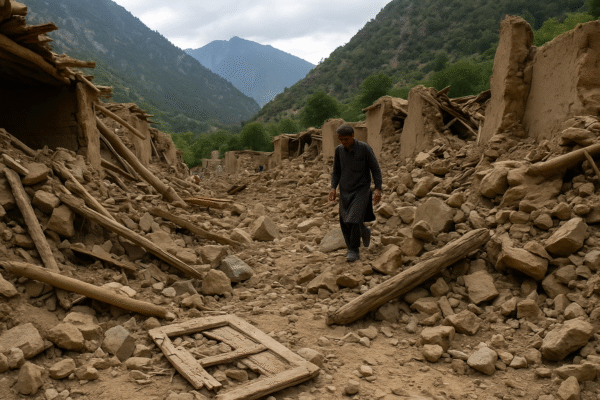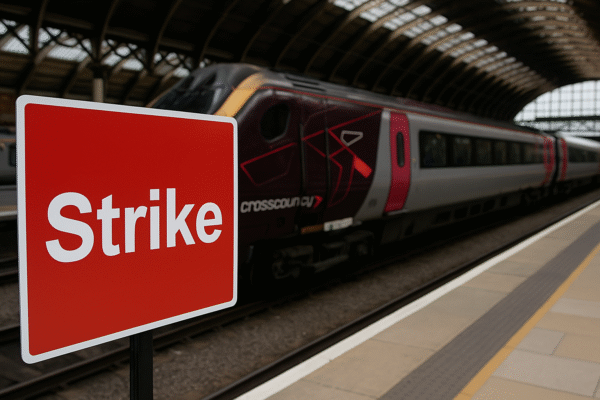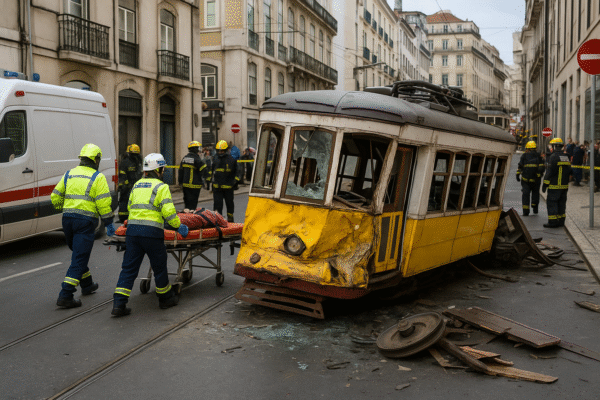On the afternoon of September 3, 2025, Lisbon’s steep hills witnessed one of the darkest moments in the city’s modern history. The Gloria Funicular, known locally as Elevador da Glória and admired by millions of tourists each year, derailed near Avenida da Liberdade. In mere seconds, a cultural icon turned into a site of devastation.
The accident killed 15 people and left more than 18 others injured. With its distinct yellow carriages climbing the slopes between Restauradores Square and Bairro Alto since 1885, the Gloria Funicular has long symbolized Lisbon’s charm. But on that day, its rails carried tragedy instead of tourists.
How the Crash Unfolded
Eyewitnesses described scenes of panic as the funicular lost control. According to initial accounts, the haulage cable—responsible for pulling the car uphill and controlling its descent—suddenly detached. Once disconnected, the tram lost its braking system entirely.
The carriage, carrying over 40 passengers at the time, rolled down the steep incline at uncontrollable speed before crashing onto the pavement and overturning. Survivors reported a violent impact, with the wooden frame collapsing like “a cardboard box.”
Emergency services responded within minutes. Victims were rushed to several Lisbon hospitals, including São José and Santa Maria. Rescue operations lasted hours as firefighters worked to extract passengers and stabilize the wreckage.
The Gloria Funicular’s Historical and Cultural Significance
For nearly 140 years, the Gloria Funicular has been more than just a mode of transport. It connects locals commuting between the bustling Restauradores Square and the bohemian Bairro Alto district, while also enchanting visitors who see it as part of Lisbon’s postcard-perfect identity.
Designated a national monument in 2002, the funicular represents both Portugal’s engineering heritage and its tourism appeal. Thousands ride it daily to experience a unique journey through Lisbon’s steep streets. Its tragic derailment, therefore, is not only a public safety disaster but also a blow to the cultural and emotional fabric of the city.
Investigating the Cause
Portugal’s Instituto da Mobilidade e dos Transportes (IMT) has launched a full investigation into the crash. Preliminary findings confirm that the detached cable was the central cause.
The cable system, which usually ensures controlled ascent and descent, appears to have failed due to either material fatigue, a maintenance lapse, or a malfunction in the winding mechanism. Without this critical support, the carriage accelerated uncontrollably.
Authorities are also investigating whether the emergency braking systems engaged properly. Experts stress that modern fail-safes should have prevented such a catastrophic outcome even after a cable failure. Mechanical analysis and witness testimonies are being collected to determine responsibility.
Reaction from Leaders and Citizens
Prime Minister Luís Montenegro addressed the nation, calling the incident “an irreparable loss that has shaken Portugal to its core.” He assured families that the government would provide full support and promised a transparent investigation.
Lisbon Mayor Carlos Moedas declared three days of mourning and ordered flags at half-mast across the city. He described the tragedy as unprecedented in Lisbon’s history and pledged urgent safety checks across all public transport systems.
For residents, the Gloria Funicular was a daily companion, a familiar sound echoing through narrow streets. For tourists, it was an essential part of their Lisbon experience. The shock of its sudden destruction has left locals grieving and visitors unsettled.
Tourism and Safety Implications
Lisbon’s tourism industry, a major pillar of the Portuguese economy, is bracing for the impact. The Gloria Funicular was not only a transport system but also a must-see attraction, appearing in countless travel guides and photographs. Its temporary closure, pending investigation, leaves a gap in the city’s tourism circuit.
More broadly, the accident has raised questions about the safety of historic transport systems worldwide. While preservation of heritage is vital, this tragedy underscores the need for modernization, stricter inspections, and transparent maintenance records.
Travel experts predict that visitors will remain cautious, at least in the short term, when using historic funiculars and trams across Europe. Portugal, however, has vowed to rebuild trust by reinforcing safety protocols across its network.
Mourning a Loss, Learning a Lesson
As investigators sift through the wreckage, Lisbon is left mourning not only the lives lost but also a piece of its identity. Streets once filled with the cheerful rattle of the Gloria Funicular now echo with silence and sorrow.
Yet, there is also resilience. Residents have come together to support grieving families, while officials are determined to learn from the tragedy. Engineers, safety regulators, and city planners are working urgently to ensure such a disaster never repeats itself.
The Gloria Funicular will likely remain out of service for months, if not longer. Its return will depend not just on technical repairs but also on the restoration of public confidence. Until then, Lisbon’s steep streets will carry the weight of absence—an absence marked by grief, but also by the determination to preserve the city’s heritage safely.
Conclusion
The Gloria Funicular crash stands as a painful reminder that even beloved landmarks are not immune to tragedy. For Lisbon, this event is both a human disaster and a cultural wound. While the investigation continues, one truth is clear: safety must never be compromised, even when preserving the charm of history.
Lisbon, resilient and proud, will rise again. But the memory of September 3, 2025, will forever mark its streets and its people.
For more travel news like this, keep reading Global Travel Wire

















